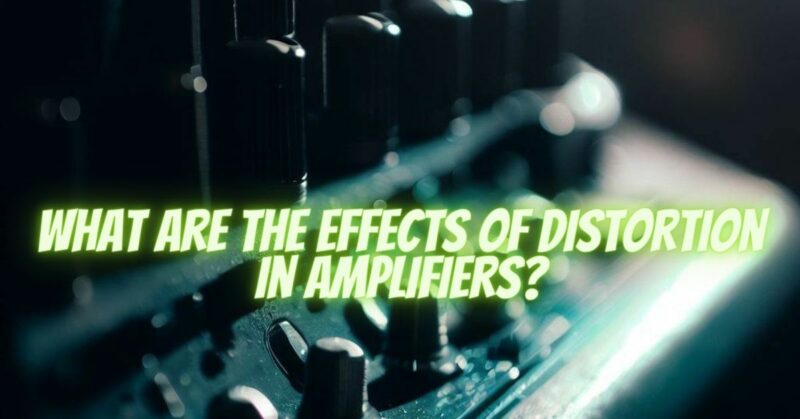Distortion is a beloved and widely used effect in the world of guitar and bass amplifiers. It has the power to transform the clean, pristine sound of an instrument into a gritty, aggressive, and harmonically rich tone. In this article, we will delve into the effects of distortion in guitar and bass amplifiers, exploring the sonic transformations, tonal enhancements, and creative possibilities it offers to musicians.
- Harmonic Enrichment:
One of the primary effects of distortion is the introduction of harmonics and overtones to the original signal. Distortion generates new frequencies that are multiples of the original input, creating a richer and more complex sound. These added harmonics contribute to a thicker, fuller tone that can enhance the perceived sustain and depth of the instrument. The specific harmonics generated depend on the characteristics of the amplifier, the type of distortion used, and the settings employed.
- Increased Sustain and Compression:
Distortion can enhance the sustain of guitar and bass notes by compressing the signal. As the input signal is clipped and distorted, it creates a more consistent and prolonged decay of each note. This extended sustain allows for expressive playing, note manipulation, and the ability to create feedback and controlled feedback effects. The compression properties of distortion also contribute to a more “compressed” and focused sound, accentuating the attack and adding a sense of power and tightness to the overall tone.
- Enhanced Dynamic Response:
Distortion can significantly alter the dynamic response of an amplifier. With increased gain and saturation, the amplifier becomes more responsive to the player’s touch and dynamics. Soft picking or playing with a lighter touch produces a cleaner and more subdued sound, while aggressive picking or playing with more force results in intensified distortion and a more aggressive tone. This dynamic sensitivity allows for greater expressiveness and control over the instrument’s tone and allows players to add nuance and emotion to their playing.
- Texture and Character:
Distortion adds texture, character, and personality to the guitar or bass tone. Different types of distortion, such as overdrive, fuzz, or high-gain distortion, produce unique sonic signatures and tonal flavors. Overdrive often imparts a smooth and warm tone, ideal for blues or rock genres. Fuzz generates a thick, fuzzy, and saturated sound, perfect for psychedelic or stoner rock. High-gain distortion offers intense saturation, aggression, and sustain, well-suited for heavy metal or hard rock. The choice of distortion type allows musicians to tailor their tone to suit their musical style and preferences.
- Artistic Expression and Creativity:
Distortion serves as a creative tool for musicians, enabling them to shape their unique sonic identity. It opens up a world of possibilities for experimentation, allowing players to explore different tonal textures, create distinctive sounds, and push the boundaries of their musical expression. From subtle grit to blistering saturation, distortion empowers musicians to convey emotions, deliver powerful riffs, and craft signature tones that define their musical voice.
Conclusion:
The effects of distortion in guitar and bass amplifiers are profound and transformative. By introducing harmonics, enhancing sustain, compressing the signal, and adding texture and character, distortion elevates the instrument’s sonic capabilities. It unlocks new creative possibilities, allowing musicians to express themselves, shape their tone, and captivate audiences with their unique musical voice. Whether you seek a subtle breakup or a full-throttle sonic assault, distortion in guitar and bass amplifiers is a powerful tool that amplifies creativity, unleashes sonic power, and pushes the boundaries of musical exploration.


